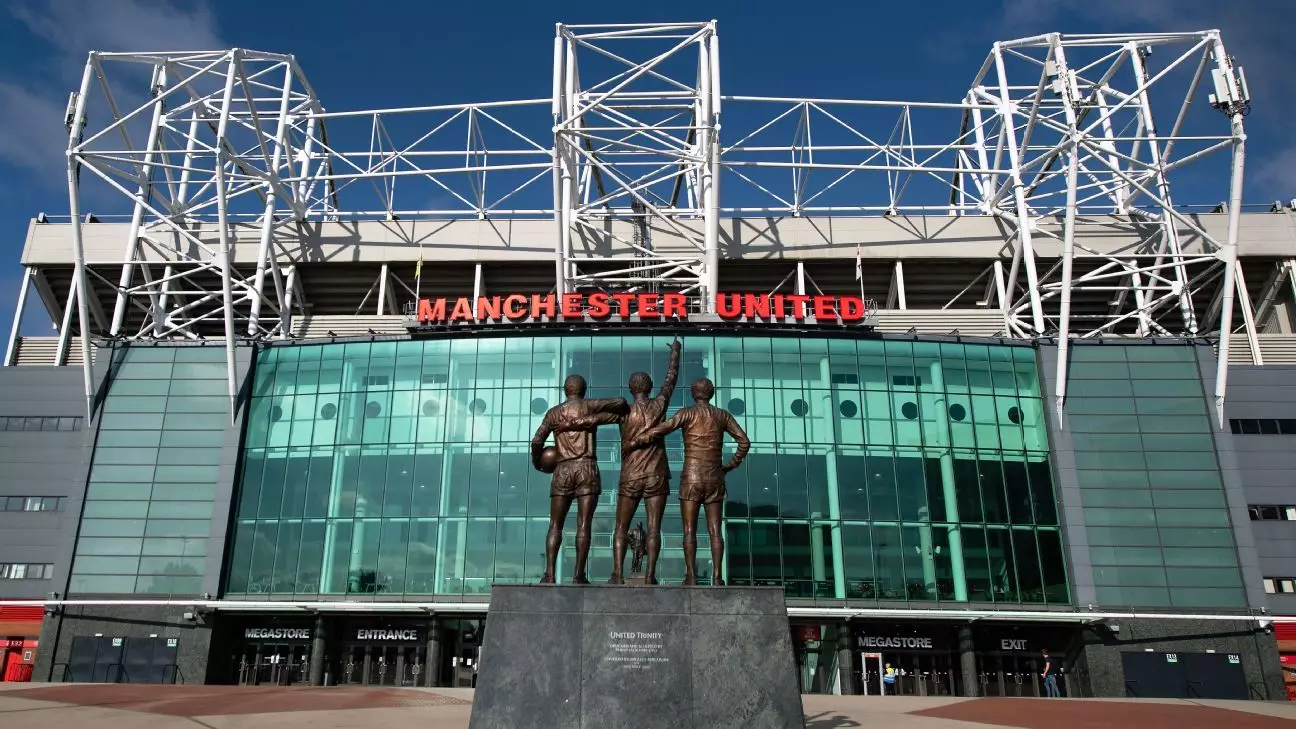The recent financial revelations from Manchester United paint a grim picture for the iconic football club, one that extends beyond mere numbers to encompass the broader impact of management decisions on both the team and its supporters. With severe reductions in broadcasting revenue and mounting financial obligations due to managerial dismissals, the situation calls for a deeper understanding of the operational and existential challenges faced by the club.
Manchester United’s quarterly financial accounts revealed a significant drop of £44.8 million ($56.1 million) in broadcasting revenue over the past year, a staggering decline attributed to the club’s participation in the Europa League instead of the more lucrative Champions League. This recession in earnings is emblematic of a club struggling not only to maintain its illustrious status but also to generate the kind of revenue necessary to support it. Such a decline highlights how critical success on the pitch is for financial viability, leading to questions about the strategic decisions made by the club’s leadership.
The decision to extend Erik ten Hag’s contract until 2026, following a relatively lackluster performance, has compounded the issue. After his recent dismissal—just four months post-contract renewal—the payout of £14.5 million ($18.2 million) covers his severance and that of his coaching team, an expenditure that takes precedence over re-investing in player signings or essential operational functions. This raises larger concerns about the long-term ramifications of such financial recklessness.
The departure of former sporting director Dan Ashworth also highlights a turbulent leadership structure within Manchester United. Hired after a costly settlement with his previous club, Newcastle United, Ashworth’s tenure lasted a mere five months. As evidenced by the financial figures, the constant shifts in management are not just unsettling for the players and staff but create uncertainty in the club’s overall vision. Such instability can adversely affect recruitment, player morale, and ultimately, on-field performance.
The management’s frequent turnover embodies a trend of reactive decision-making that reflects deeper issues within the club. It’s critical to ask whether Manchester United is making strategic appointments or merely filling positions in a bid to stabilize amidst chaos. The frequency of these changes might suggest more about the club’s inability to execute a coherent long-term vision than any individual’s incompetence.
Amid financial turmoil, the club is implementing extensive cost-cutting measures, which include over 200 redundancies since Sir Jim Ratcliffe’s INEOS Group acquired a 27.7% stake last year. Though such actions may be intended to stabilize finances, they are also indicative of a club scrambling to rectify mistakes while simultaneously attempting to fulfill the high expectations that come with the Manchester United name.
Additionally, Manchester United’s net finance costs have risen sharply, from £300,000 to £37.6 million. This significant increase stems from unfavorable foreign exchange outcomes tied to unhedged USD borrowings, highlighting another layer of financial mismanagement. Decisions regarding currency exposure can play a vital role in a club’s financial health, particularly for one with international reach like United.
Despite the challenging financial landscape, United’s chief executive, Omar Berrada, maintains an optimistic outlook, emphasizing efforts to improve the men’s team’s league standing, which currently sits precariously just above the relegation zone. His remarks underline that the present isn’t solely defined by financial turmoil; success in cup competitions offers hope for redemption. However, realistic evaluation reveals that mere participation in tournaments, like the Europa League, will not suffice for a club of this stature.
Equally, the women’s team exhibits far more promise, currently placed second in the Women’s Super League. This divergence raises an essential discussion about the allocation of resources between the men’s and women’s teams, especially given the increasing significance of women’s football. The timing of conversations around club investments amid rising debt emphasizes that not all parts of the organization are equally prioritized.
In the wake of these staggering financial reports, the Manchester United Supporters Trust (MUST) voiced their disapproval of proposed ticket price increases, labeling them as “futile and counterproductive.” Their commentary sheds light on the ongoing tension between the club and its fanbase, suggesting that rising prices do little to alleviate the issues fundamentally rooted in the management’s financial approach. Instead, it mirrors a club struggling under the weight of decades of debt-induced difficulties and poor governance.
Manchester United stands at a crossroads. The interplay between managerial decisions, financial liabilities, and the performance of both teams creates a precarious environment. As the club grapples with its challenges, it must prioritize a cohesive strategy that unites management decisions with stakeholder interests, ensuring the legacy of one of football’s most storied institutions does not fade away.

